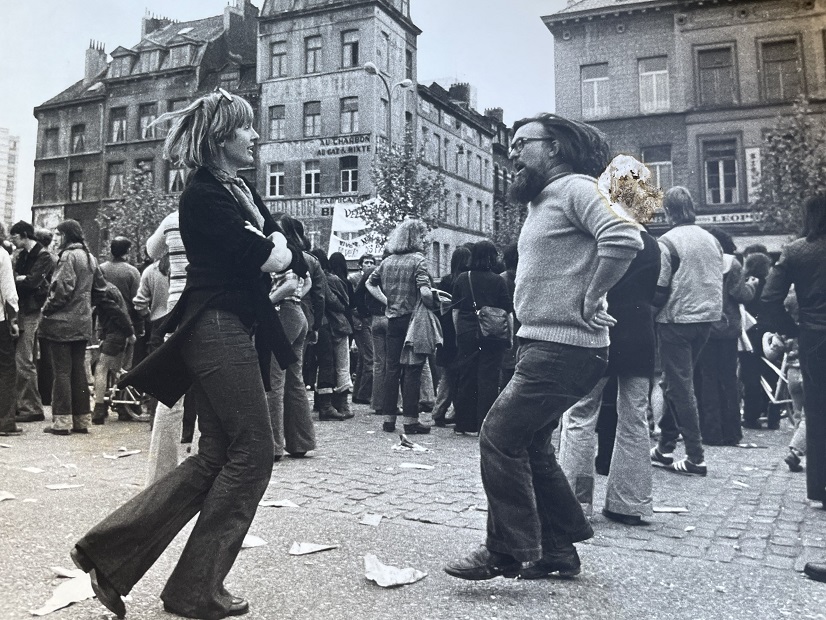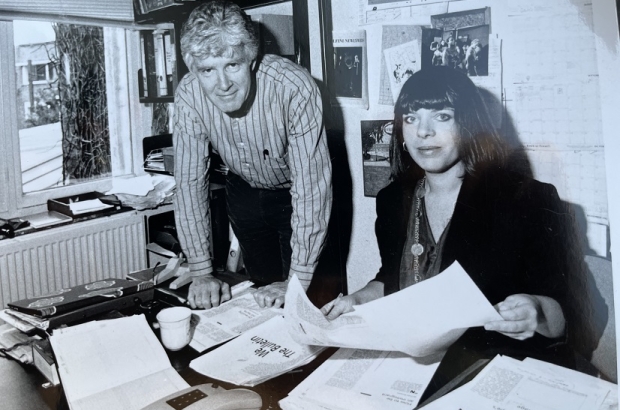- Daily & Weekly newsletters
- Buy & download The Bulletin
- Comment on our articles
The Bulletin at 60: “Those were the days my friend, we thought they’d never end,” reminisces former editor Brigid Grauman
The Bulletin’s 60-year history divides into two distinct periods – BC and AC: Before Corelio and After Corelio. Its BC heyday spanned the 40 years when it flourished as an independent, printed weekly magazine that was essential reading for Brussels’ international community. Then, as the digital 21st century took hold, came its AC period as an online publication that was until recently part of the Flemish media group Corelio.
In the early BC days, long before I occupied the editor’s chair for 17 years, my mother, Aislinn Dulanty, was hired in that role by Monique Ackroyd. The Bulletin was still publishing then from the cellars of Monique’s home in leafy Dieweg in Uccle. As a child I remember the crowded cellar with its Roneo machine and the four women who worked down there.
Those were exciting days of expansion. My glamorous, well-read and often very humorous mother had been new to journalism but grew rapidly in confidence as The Bulletin’s editor, while Monique concentrated on publishing and advertising. With her flair and charm, Aislinn was soon roping in talent from the English-language EU press corps. There was John Lambert of The Sunday Times (pictured below with Aislinn at a demonstration), and various Financial Times reporters who included her companion Reginald Dale.

Over more than 20 years of Aislinn’s editorship, the magazine blossomed into an original and much-loved publication. Famously, it organised a picnic in the Grand Place to protest against its use as a city-centre car park. After enthusiastic throngs had sat on the cobblestones, victory followed with the authorities buckling and cars banned.
Meanwhile, Monique and her team were raking in advertising that included pages and pages of small ads. The Bulletin became renowned for notices of garage sales where American refrigerators and cars could be picked up for a song, and for its notorious “escort services”.
Aislinn was a feminist, a lover of dance, music and theatre, and her tastes and interests gave The Bulletin its character and reputation. Then in 1990, aged 59, she died of cancer. Monique took a chance and promoted me from humble reporter to editor-in-chief. As John Stuyck said in his own recollections,The Bulletin became a phenomenon – a family-run magazine that punched way above its weight. Johnny was a model publisher who kept us profitable and always backed me editorially.

My editorial focus, mentored by Aislinn, was to uncover Belgium’s secrets for our international readership. Insights into the subterranean life that few foreigners knew anything about were supplied by Cleveland Moffett (pictured with Brigid in main image) with his elegant, erudite Brussels Notebook, while Derek Blyth explored Belgium’s highways and byways.
Among the many outside contributors, Flemish journalist Max Borka wrote eccentric art features, and Sweden’s Emily von Sydow interviewed EU commissioners about their hobbies. They weren’t all journalists, as some of the commission’s top officials began to contribute articles on food, music and art. In a gratifying coup, I convinced European Commission president Romani Prodi to endorse the magazine in an advertising campaign we ran on the side of the Brussels trams.
Those were halcyon days, but then the internet began to erode our classified ad revenues, and display ads were fought over with savage ferocity against other struggling media competitors. The magazine was no longer the hefty publication it had once been, despite moving over to colour.
Johnny could no longer resist the pressure to sell. He did so to Corelio, whose chair, Thomas Leysen, had apparently long loved the magazine. But The Bulletin wasn’t really cut out to be part of a big group, being too idiosyncratic to thrive in those circumstances and something of an enigma to over-confident Flemish publishing executives.
In any case, times had changed. Aislinn and Monique were long gone and so were many of the writers from our early days. Now the AC period, too, is over. With new publisher Sarah Crew at the helm, I feel sure that The Bulletin is once again in more understanding hands.
Brigid Grauman was The Bulletin’s editor-in-chief for 17 years (1990-2007). She has reported for the Financial Times, Wall Street Journal and ARTnews, among others. She is the author of family memoir Uncle Otto’s Puppet Theatre, and is now working on a biography of her grandfather John Dulanty, Ireland’s first ambassador to the UK


















